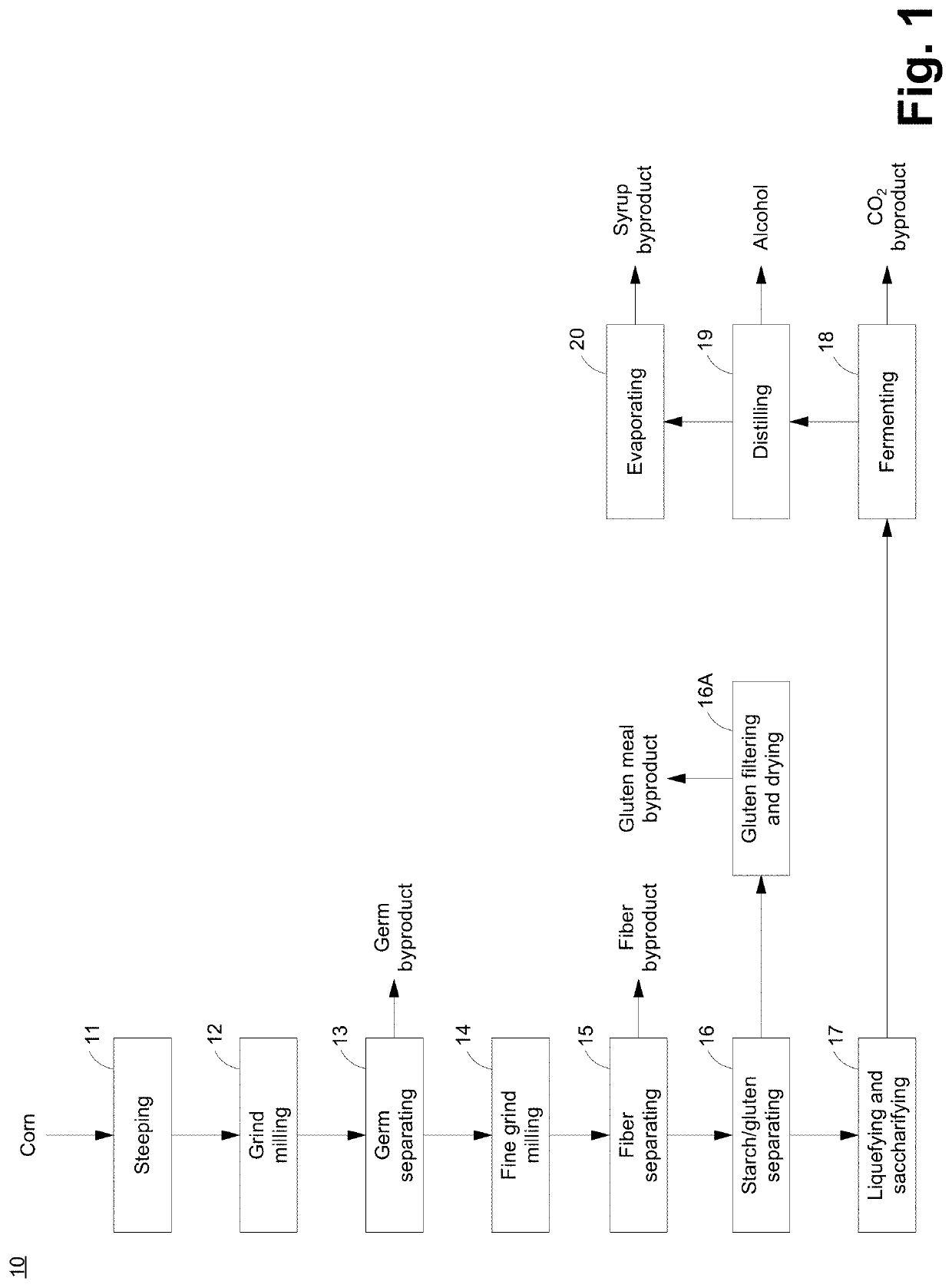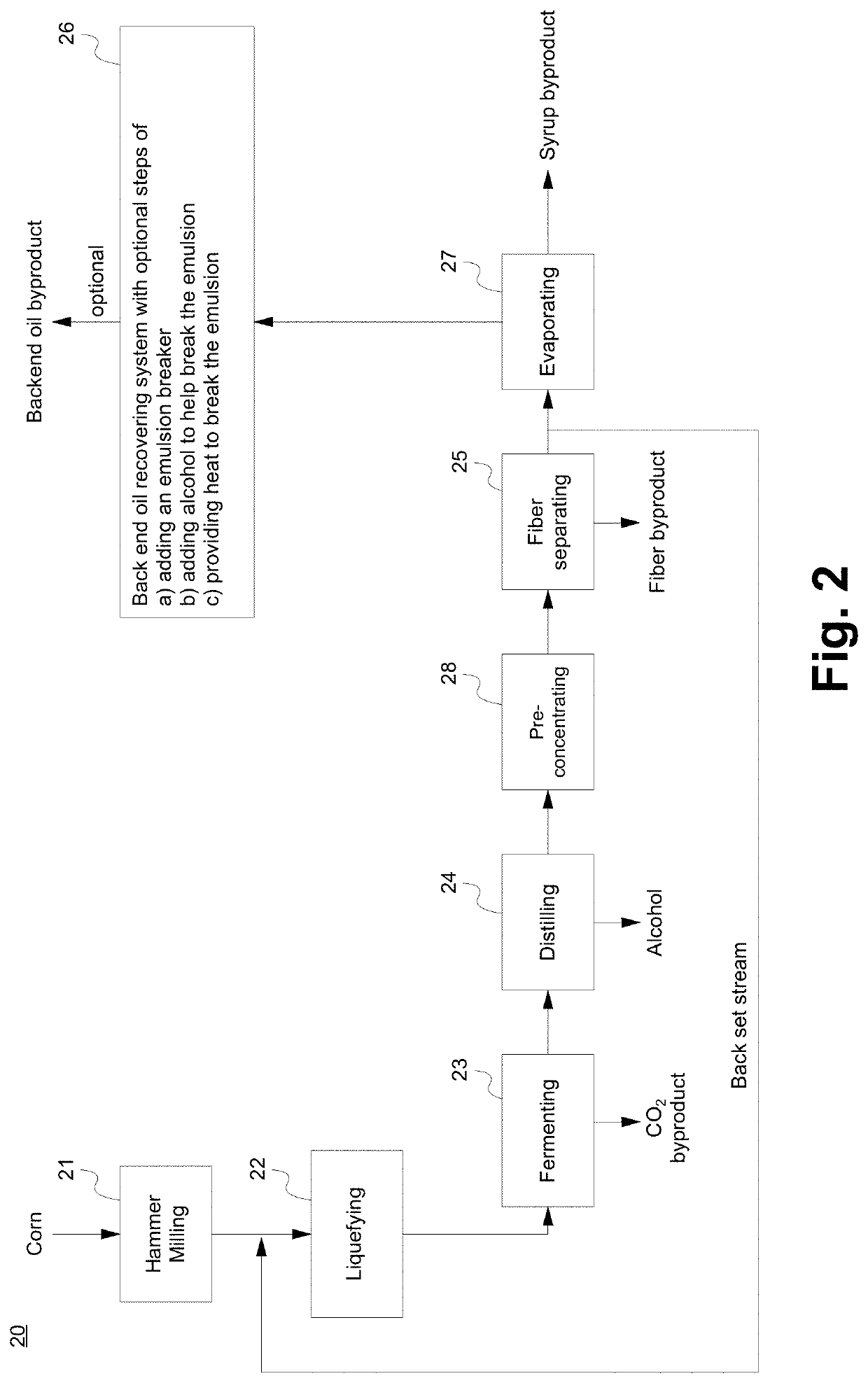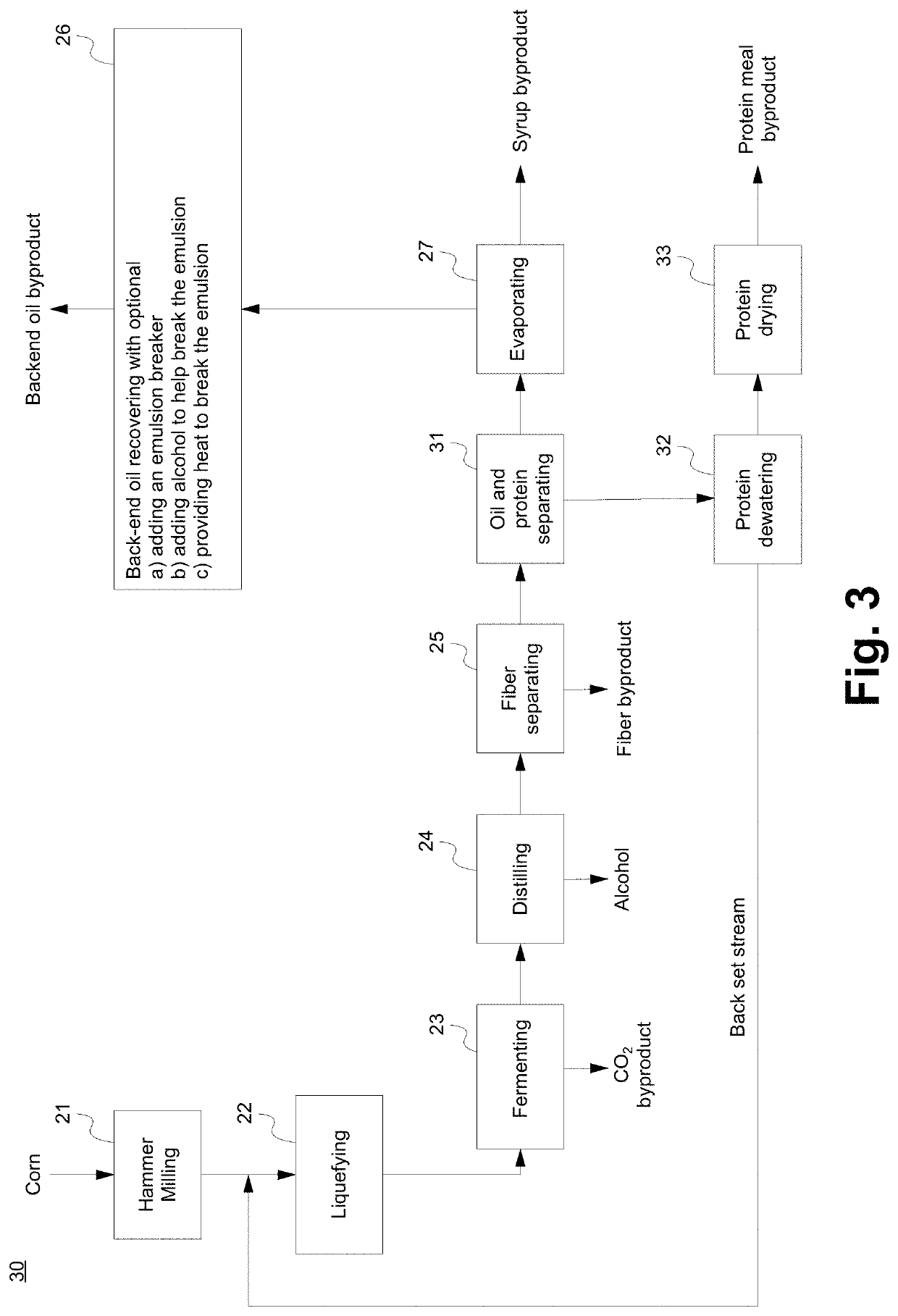System for and method of making four types of animal feeds from grains that are used in the alcohol production plant
a technology of alcohol production and grain, which is applied in the direction of vacuum distillation separation, filtration separation, separation process, etc., can solve the problems of high capital investment and high energy cost of operation, complex wet grinding process, high cost of chemicals, etc., and achieves the effects of increasing oil yield, increasing alcohol yield, and increasing protein yield
- Summary
- Abstract
- Description
- Claims
- Application Information
AI Technical Summary
Benefits of technology
Problems solved by technology
Method used
Image
Examples
Embodiment Construction
[0073]Reference is made in detail to the embodiments of the present invention, examples of which are illustrated in the accompanying drawings. While the invention is described in conjunction with the embodiments below, it is understood that they are not intended to limit the invention to these embodiments and examples. On the contrary, the invention is intended to cover alternatives, modifications and equivalents, which can be included within the spirit and scope of the invention as defined by the appended claims. Furthermore, in the following detailed description of the present invention, numerous specific details are set forth in order to more fully illustrate the present invention. However, it is apparent to one of ordinary skill in the prior art having the benefit of this disclosure that the present invention can be practiced without these specific details. In other instances, well-known methods and procedures, components and processes have not been described in detail so as not...
PUM
 Login to View More
Login to View More Abstract
Description
Claims
Application Information
 Login to View More
Login to View More - R&D
- Intellectual Property
- Life Sciences
- Materials
- Tech Scout
- Unparalleled Data Quality
- Higher Quality Content
- 60% Fewer Hallucinations
Browse by: Latest US Patents, China's latest patents, Technical Efficacy Thesaurus, Application Domain, Technology Topic, Popular Technical Reports.
© 2025 PatSnap. All rights reserved.Legal|Privacy policy|Modern Slavery Act Transparency Statement|Sitemap|About US| Contact US: help@patsnap.com



